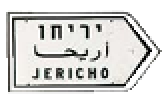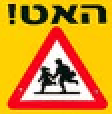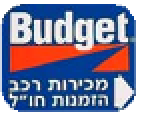Travel Reference
In-Depth Information
Travelling Around by Car
transliteration of place names
from Hebrew and Arabic into
English. You could be follow-
ing directions for Beersheba
one minute and for Be'er
Sheva the next. These are,
of course, the same place.
In this topic we have tried
to present place names as
you will see them spelled
on Israeli road signs but local
inconsistencies mean that this
is not always the case.
With well-maintained roads, light
W
traffic away from the big cities
and Israel's coastal highway, short
distances between towns and some
d
enchanting scenery, the Holy Land
should be a pleasure to drive around.
The one black spot is other road users. Both Israelis
and Arabs can be reckless behind the wheel, and road
fatalities are high. While this should not put you off
driving, you do need to be cautious. On the positive
side again, Israel is full of small places of beauty and
interest, located well off any bus route, and having a
car at your disposal can really open up the country.
Road sign in
three languages
CAR HIRE
and Dead Sea areas, are few
and far between. You are
strongly advised to fill up
your tank before setting off
on any long journeys.
No entry sign
School sign
Most major international
car hire companies are
represented in Israel. Most
have offices (or counters) at
Ben Gurion Airport, in Tel
Aviv and in
Jerusalem. For
the sake of
convenience,
it is better to
use one that
has a repre-
sentative at
the airport.
To rent a car, you must have
a full, clean driving licence (an
international driving licence is
not necessary). Cars are rented
only to those over 21 years
old, although some companies
require that you be 23. Prices
vary dramatically and it is
recommended that you shop
around before settling on a
deal. Local companies, such
as
Eldan
, frequently offer the
best rates. Be aware that rental
charges are usually quoted
exclusive of insurance and
collision waivers.
Note that it is not allowed
to take cars hired in Israel
over into Jordan or Sinai.
Car hire is not very popular
in Jordan and Sinai
because there are so
few roads to explore.
It also works out as
very expensive when
compared with getting
around by other forms
of transport, such as
the bus or hiring a taxi
for a day or two.
Petrol stations in
Jordan, Sinai and even
certain parts of Israel,
particularly the Negev
THE RULES OF THE ROAD
Driving in Israel is on the
right-hand side of the
road. At unmarked junctions
drivers give way to traffic on
the right, and overtaking is
done on the left. The speed
limit in towns is 50 km/h (30
mph) and 90 km/h (55 mph)
on out-of-town roads. On
some motorways the speed
limit is 100 km/h (60 mph).
Seat belts must be worn.
Children under 15 must sit in
the back and children under
four must be restrained in a
suitable child's seat.
Two-way sign
Right-hand bend
Sign for a car
rental company
Tourist site sign
Parking sign
DRIVING IN THE
PALESTINIAN TERRITORIES
Cars in Israel and the
Palestinian Autonomous
Territories have licence plates
of different colours. Israeli
cars have yellow plates, while
Palestinian cars' plates are
blue or green. It is inadvisable
to drive a car with yellow,
Israeli plates into Palestinian
areas, particularly frequent
troublespots such as Hebron
and Ramallah. Cars hired in
Israel are usually not insured
for the Palestinian Territories.
Conversely, driving a car with
Palestinian plates in Israel will
make you the object of a great
deal of unwelcome attention
from the security forces.
ROAD SIGNS IN ISRAEL
Although there is a lack of
cautionary and warning
signs on Israel's roads, all
places of interest are well
indicated. Signs are in both
Hebrew and English (and
sometimes in Arabic too). A
problem arises, however, with
the lack of consistency in the
DRIVING IN JORDAN
While driving is on the
right, Jordanians seem
to consider most other road
rules open to interpretation.
Overtaking takes place on
both sides of the road and
right of way goes to he or she
Petrol station in Israel















